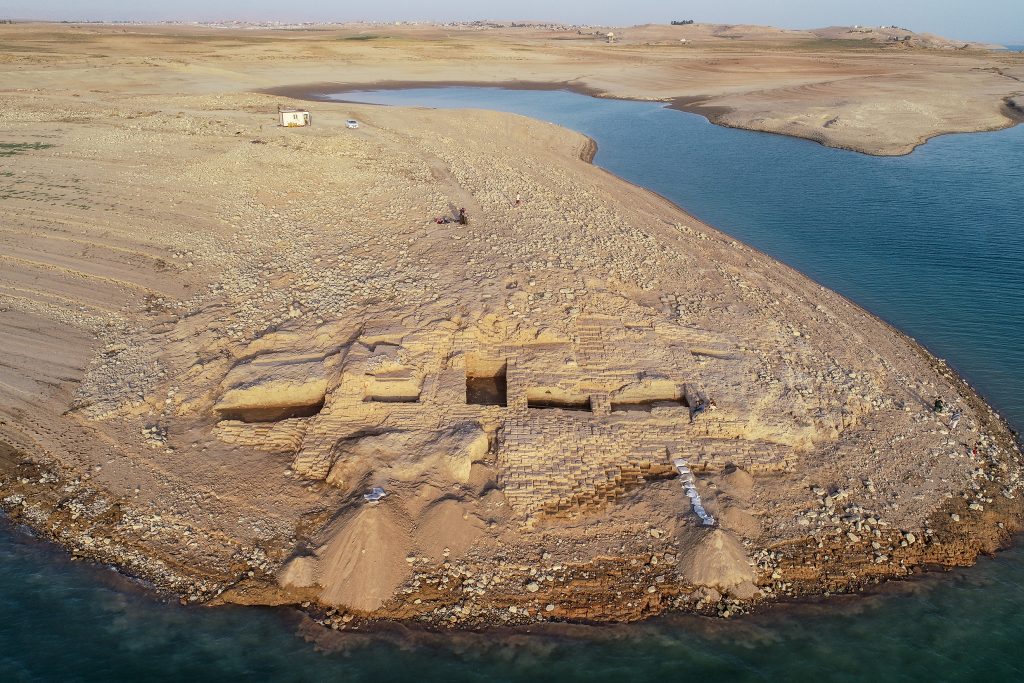A 3,400-year-old palace has emerged from a reservoir in the Kurdistan region of Iraq after water levels dropped because of drought.The discovery of the ruins in the Mosul Dam reservoir on the banks of the Tigris River inspired a spontaneous archeological dig that will improve understanding of the Mittani Empire, one of the least-researched empires of the Ancient Near East, the Kurdish-German team of researchers said in a press release.”The find is one of the most important archaeological discoveries in the region in recent decades,” Kurdish archeologist Hasan Ahmed Qasim said in a press release.The Mittani Empire is one of the least researched civilizations of the Ancient Near East.
University of Tübingen eScience Cente/Kurdistan Archaeology OrganizationThe palace would have originally stood just 65 feet from the river on an elevated terrace. A terrace wall of mud bricks was later added to stabilize the building, adding to to the imposing architecture.Ivana Puljiz, an archeologist from the University of Tübingen’s Institute for Ancient Near Eastern Studies, describes the palace, known as Kemune, as a carefully designed building with mud-brick walls up to two meters (6.6 feet) thick.Some of the walls are more than two meters high, and various rooms have plastered walls, she added.The team also found wall paintings in shades of red and blue, which were probably a common feature of palaces at the time but have rarely been found preserved.
“Discovering wall paintings in Kemune is an archaeological sensation,” she said in a press release.”Kemune is only the second site in the region where wall paintings of the Mittani period have been discovered,” Puljiz told CNN in an email. Clay tablets found at the site have been sent to Germany for translation. University of Tübingen eScience Cente/Kurdistan Archaeology Organization. Ten clay tablets covered in cuneiform, an ancient system of writing, were also discovered and have been sent to Germany for translation.”From the texts we hope to gain information on the inner structure of the Mittani empire, its economic organisation, and the relationship of the Mittani capital with the administrative centers in the neighboring regions,” Puljiz told CNN.Archeologists first became aware of the site in 2010 when water levels in the reservoir were low, but this is the first time they have been able to excavate.




